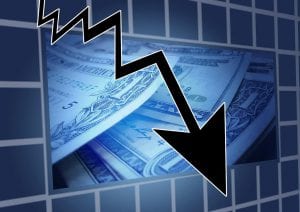
In Which Situation Would a Savings Bond Be the Best Investment to Earn Interest?
April 17, 2024
Introduction
Investing in savings bonds is a critical aspect of financial planning, offering individuals a means to earn interest and secure their financial future. However, understanding the optimal times to invest in savings bonds is pivotal for maximizing returns and managing risks effectively. This essay explores the intricate relationship between mass psychology and market cycles, highlighting how they collectively influence investing in savings bonds. We can identify strategic opportunities for shifting towards or away from bonds by examining market euphoria and fear periods.
Today, we’ll delve into the question: “In Which Situation Would a Savings Bond Be the Best Investment to Earn Interest?” We’ll explore various scenarios and offer insights into when this investment option is most advantageous.
This essay also considers essential factors such as economic conditions, personal financial circumstances, and the characteristics of bonds, all of which play a decisive role in bond investment decisions. By exploring these dynamics and insights from renowned traders, we aim to provide a comprehensive framework for determining when savings bonds represent the most prudent investment option for earning interest.
Mass Psychology and Market Cycles
Euphoria and Market Peaks
Market euphoria, characterized by excessive optimism and overvalued asset prices, often signals a strategic moment to redirect investments towards safer options like savings bonds. This euphoric phase, marked by investor overconfidence and a pervasive belief in ever-rising markets, typically precedes significant corrections or crashes. For instance, during the dot-com bubble in the late 1990s, investors experienced tremendous gains, prompting a sense of invincibility. However, the subsequent market collapse in 2000 led to substantial losses for those who failed to diversify their portfolios or shift towards more conservative investments like bonds. Thus, periods of market euphoria necessitate prudent reassessment, making savings bonds an attractive option to safeguard capital and maintain stable interest earnings.
Fear and Market Bottoms
In stark contrast, market lows are often fueled by pervasive fear and pessimism, driving investors to question the potential for recovery. These periods present unique opportunities for those with a higher risk appetite to shift back from the safety of bonds to riskier assets. Buying these depressed assets at low prices can lead to significant gains as markets eventually rebound. For example, the 2008 financial crisis caused widespread panic, prompting many investors to exit the stock market and seek refuge in bonds. However, those who remained invested or strategically reentered the market during this fearful period reaped substantial rewards as the markets recovered and reached new highs. Thus, while fear-driven lows can be daunting, they also present potential turning points for shifting back into riskier investments.
Historical Examples
History provides numerous examples of mass psychology influencing market cycles and bond investment decisions. One notable instance was the Great Depression of the 1930s, which triggered a profound shift in investor sentiment. As the stock market plummeted, investors sought safety in government-backed securities, leading to a surge in bond investments. Similarly, during the 2008 financial crisis, investors again turned to the perceived safety of bonds as stock markets worldwide experienced sharp declines. In both cases, the prevailing psychological climate significantly influenced investment choices, underscoring the impact of mass psychology on market cycles and the appeal of savings bonds during turbulent economic periods.
Other Factors to Consider When Investing in Bonds
Economic Conditions
Economic conditions, particularly interest rates and inflation, play a pivotal role in the attractiveness of bonds as investments. Generally, rising interest rates make newly issued bonds more appealing as they offer higher yields than older bonds. For instance, investors may favour investing in new bonds with higher returns when central banks increase interest rates. Conversely, older bonds with higher coupon rates become more desirable during declining interest rates. Inflation, meanwhile, can erode the real return on bonds unless they are inflation-indexed. Thus, investors must carefully consider the interplay between interest rates and inflation when deciding whether to invest in bonds, as these economic factors significantly impact their potential returns.
Personal Financial Situation
An individual’s risk tolerance and timeline are critical considerations in investing in savings bonds. Risk tolerance refers to the degree of variability in investment values that an individual can comfortably withstand. More risk-averse individuals tend to favour the stability and lower volatility associated with savings bonds, particularly when nearing retirement or having short-term financial goals. On the other hand, investors with a higher tolerance for risk may opt for more aggressive investment strategies involving stocks or riskier assets. Additionally, an investor’s timeline is crucial, as those with longer investment horizons can often withstand short-term market fluctuations and may benefit from riskier investments. Thus, a comprehensive assessment of risk tolerance and investment goals is essential for determining the suitability of savings bonds within an individual’s financial plan.
Bond Characteristics
Various characteristics of bonds, such as credit quality and maturity date, also influence the decision to invest in them. Credit quality pertains to the issuer’s likelihood of defaulting on debt obligations. High-credit quality bonds, typically issued by governments or highly-rated corporations, carry lower default risk but generally offer lower returns than lower-rated bonds. The maturity date is until a bond’s total face value is repaid, with longer-term bonds usually offering higher yields to compensate for increased interest rate risk. Thus, investors must consider the trade-off between risk and return when evaluating bond characteristics, ensuring that the chosen bonds align with their financial objectives and risk tolerance.
Insights from Top Traders Throughout History
Jesse Livermore (1877-1940)
Jesse Livermore, a renowned stock market operator, emphasized the importance of patience and discipline in investing. He advocated waiting for the right market conditions before committing capital, a strategy that aligns with the timing considerations for investing in savings bonds. Livermore’s principles underscore the value of discipline in adhering to investment plans during market highs and lows, avoiding impulsive decisions driven by mass psychology.
Benjamin Graham (1894-1976)
Benjamin Graham, often called the father of value investing, developed a rigorous framework for investing based on fundamental analysis. His principles emphasize investing in securities offering a “margin of safety,” which can be applied to bond investments. Graham’s approach involves seeking undervalued assets during market downturns, similar to the strategic shift towards bonds during market peaks.
Ray Dalio (1949-present)
Ray Dalio, founder of one of the world’s most significant hedge funds, has developed innovative risk management and diversification strategies. Dalio emphasizes the importance of maintaining a well-balanced portfolio, including a mix of stocks, bonds, and commodities. His approach underscores the role of bonds in providing stability and diversification within an investment portfolio, especially during volatile market conditions.
Conclusion
“In conclusion, the decision to invest in savings bonds is influenced by many factors, including the prevailing market sentiment driven by mass psychology, economic conditions, personal financial circumstances, and the inherent characteristics of bonds. Periods of market euphoria and widespread fear can signal strategic moments for shifting towards or away from bonds, respectively. Additionally, economic factors such as interest rates and inflation impact the appeal of bonds, while an individual’s risk tolerance and investment timeline guide their bond investment choices.
Insights from top traders like Jesse Livermore, Benjamin Graham, and Ray Dalio further reinforce the importance of discipline, value investing, and diversification. The question, “In Which Situation Would a Savings Bond Be the Best Investment to Earn Interest?” is central to these considerations, as savings bonds may present the optimal choice for earning interest during market peaks or periods marked by heightened economic uncertainty. Integrating historical wisdom with a nuanced understanding of market dynamics can help investors make well-informed decisions about capitalizing on the benefits of savings bonds.”
Articles That Offer In-Depth Analysis

Why the US Medical System is Broken?

Define Fiat Money in Economics: The USD is A prime example

United States Sanctions on Russia: Pressuring Europe to Comply

Financial Instability: 40% of Americans Can’t Handle $400 Emergencies

Philippines Vacation Spots: Unveiling the Treasures of Paradise

Red Alert: Retirement crisis in America

How Does Oil Pulling Work?

Education trends: The Transformative Power of Education

The Exportation Of The American Life Style

Mob Rule Game: Conquer Stock Market Mayhem for Investing Success

SOS: Distress Signals from the American Economy in Trouble
Alarming Surge in Sexual Violence in Germany

Embracing Investing Psychology: Profiting from Negativity

Corn-Eating Hamster Cannibals: Unveiling the Mystery

Food for Thought Meaning: Exploring Intellectual Depths
FAQ: In Which Situation Would a Savings Bond Be the Best Investment to Earn Interest?
1. How does mass psychology influence investing in savings bonds?
Answer: Mass psychology impacts market cycles. Euphoria prompts safer investments, while fear during market lows presents opportunities for reconsidering riskier assets.
2. What economic factors should I consider when investing in bonds?
Answer: Interest rates and inflation are crucial. Rising rates make new bonds attractive, while inflation affects actual returns unless bonds are inflation-indexed.
3. How do top traders’ insights apply to investing in savings bonds?
Answer: The wisdom of traders like Jesse Livermore, Benjamin Graham, and Ray Dalio is invaluable. Livermore stresses patience and discipline, Graham emphasizes a margin of safety, and Dalio underscores bonds’ role in diversification.


